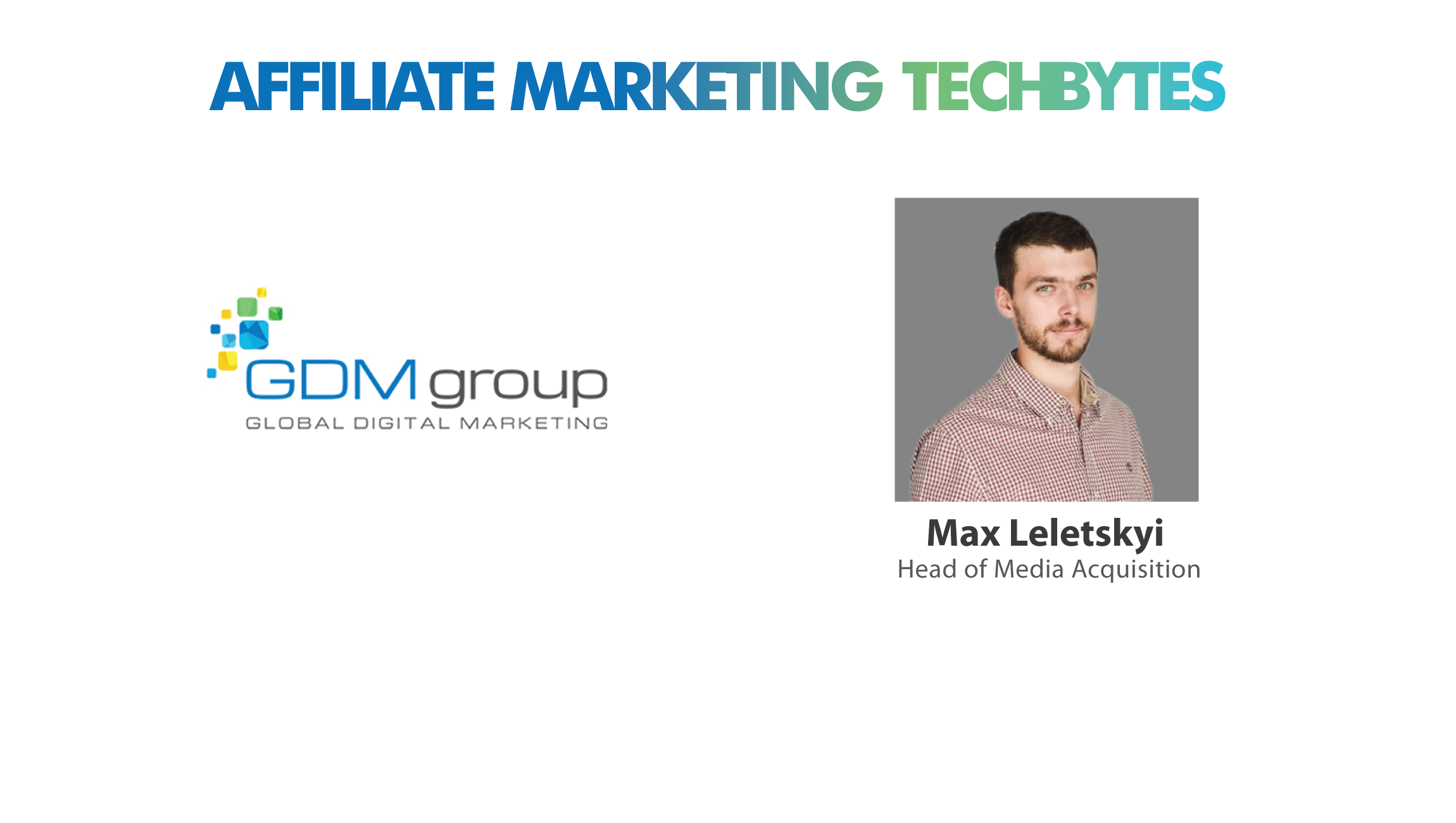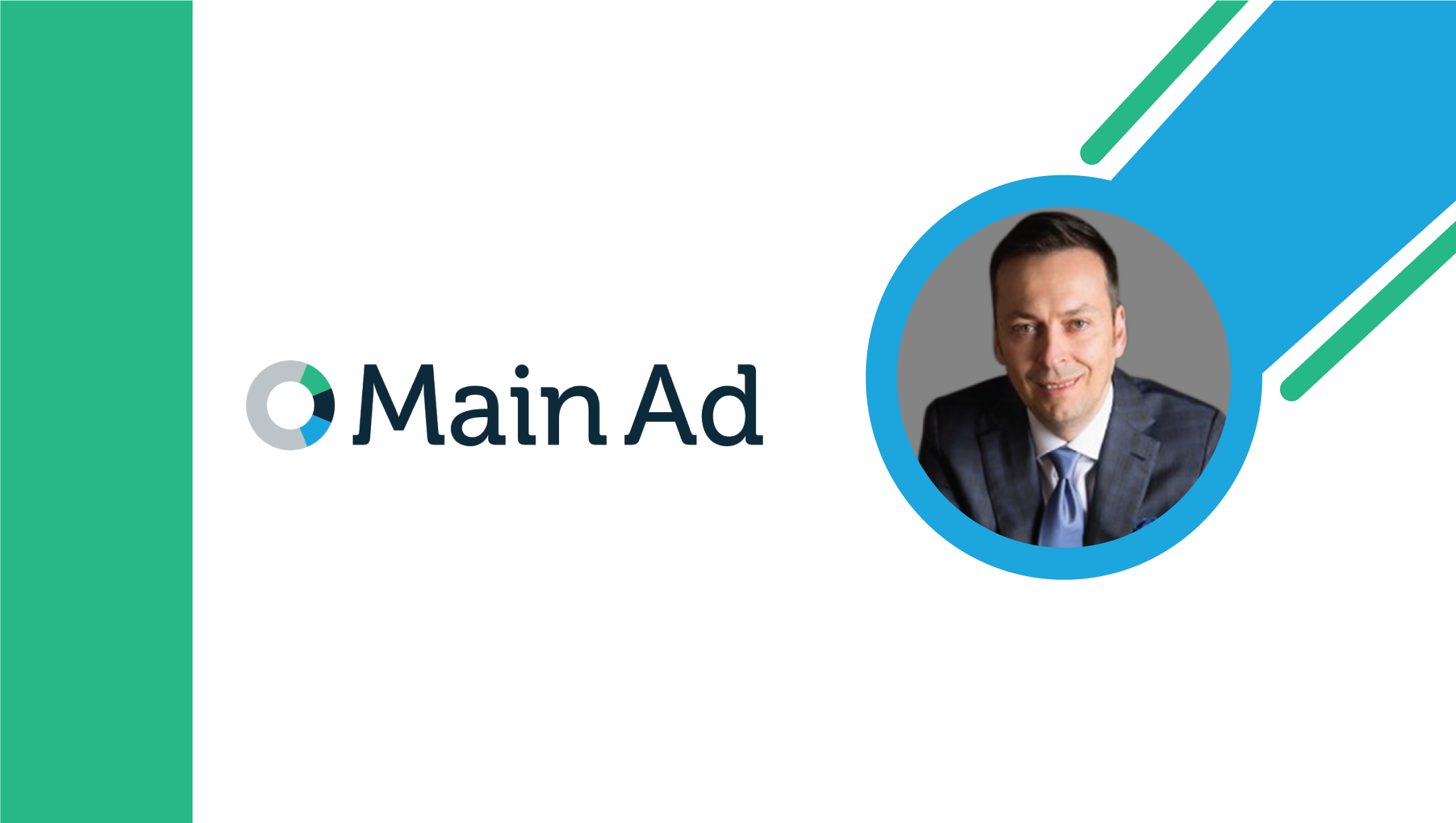Max Leletsky
Head of Media Acquisition at GDM Group
New marketing technologies, largely driven by data analytics and mobile experiences, are gradually replacing traditional engagements. New-age mobile experience offers greater revenue by enabling publishers to monetize their inventory. Affiliate marketing, however, continues to run smoothly and remains aligned to legacy systems. We spoke to Max Leletskyi, Head of Media Acquisition at GDM Group, to understand how data-driven solutions for global advertising would drive automation.
Html code here! Replace this with any non empty text and that's it.
MTS: Why are some advertisers indifferent to their affiliates’ promotion methods?
Max Leletskyi: The rapid advancement in development of ad formats and their application over the last couple of years keeps even the most seasoned marketing experts on their toes, constantly checking the news. For many advertisers, the marketing stack required to comply with these advancements might get downright confusing. It would take up valuable time to get an in-depth perspective on all innovations in the field and even more time to optimize based on that perspective. That’s why advertisers often go to networks or private affiliates, as good communication streamlines the process.
MTS: How can advertisers make affiliates’ lives easier and vice versa?
Max Leletskyi: Addressing the previous point, proper communication is vital. It is common behavior among advertisers to make massive optimizations without sharing their reasoning beyond, “it doesn’t work for us.” While the actual cause is often valid, opening a dialogue could create new solutions based on both sides’ information and vision. Otherwise, trust diminishes and cooperation gets formulaic and rigid, which stifles innovation and progress.
MTS: Should advertisers enforce strict control over each step of their promotion or give affiliates space for more creative approaches?
Max Leletskyi: The answer is somewhere in the middle, leaning toward creative freedom. There are numerous tools monitoring the most threatening activities for the advertiser, but none serve up creative ideas for promotion. If the matter of concern is specific representation of the brand and meticulous crafting of its image – that’s a job for the in-house media buy team. As long as creativity stays within a brand-safe and legal space, there are foolproof methods of measuring traffic output according to each advertiser’s KPIs, which should give them a picture of what works and what doesn’t as well as a sufficient degree of control over the promotion of their brand.
MTS: What is the most mutually beneficial way of dividing risks between advertisers and affiliates/networks?
Max Leletskyi: Networks are fully responsible for traffic quality and compliance of ad creatives. Advertisers are obliged to pay for all traffic except fraud, up until they ask to pause that traffic + 2 business days for the network to execute. Again, regular feedback from advertisers as traffic matures is vital. Depending on the flow, rebill rate, frequency of traffic evaluation and other metrics on the advertiser’s side, it is important to not only analyze the first day traffic quality or the percentage of first time deposits, but also retention rate – weekly, biweekly, monthly and so on. Providing affiliate networks with this data will make the business more transparent, reduce low quality traffic volumes and distinguish high quality traffic faster.
MTS: Should advertisers take affiliates’ suggestions on improving their product and ad creatives?
Absolutely. Effective promotion is facilitated by a shared vision from both sides of the spectrum. Missing that perspective would be missing a huge chunk of data that would help the marketing campaign immensely, especially with creatives. Affiliates track performance on their end to see what converts, and they certainly want to make money. Why not listen to what they have to say? I personally know several cases of affiliates becoming official advertisers’ advisors or successful affiliate-to-advertiser transformations, which prove the idea that successful affiliates possess the skillset needed to create and sell services online.
MTS: What traffic sources would dictate the future of affiliate marketing?
Max Leletskyi: Video and native ads are at the forefront of online marketing right now, and they’re showing no signs of stopping. It also seems there is a trend of native ad networks actively implementing video ad formats. As the traffic ecosystem matures, it’s getting harder and harder to join the game. Bigger companies with budgets to spend take over the market, so traffic sources adapt to the changes and try to offer all types of appropriate inventory immediately. This industry evolves so quickly, it’s very challenging to predict what the market is going to demand in two years. That’s why a lot of startups never go live or don’t meet their goals after launch.
For now, there is no other traffic source as engaging to the user and as high quality as video ads. Perhaps VR will play a role in the next five years, but we’re not quite there yet.
MTS: When is automation going to take the human factor out of the advertising cycle?
Max Leletskyi: For those concerned that automation may take over affiliate advertising in the future, I don’t agree. It seems unlikely that automation will exclude the human factor completely, unless AI develops to the point of obtaining consciousness and creative thinking – at which point we will have different concerns altogether. Imagining a brand — its look and message — is exclusively a human task. Otherwise, the bots might as well run the company.
MTS: How could consumers be educated about fraudulent advertising?
Max Leletskyi: This is an important topic given the huge variety of ad formats and funnels. Email phishing looks like an ordinary reminder to reset your password, one-click flow pin submits may not warn you about the cost of the service, a sweepstakes pop-up ad might look like a discount on the site you subscribed to, or imitate a social media platform’s interface. The best advice is to analyze what you see and apply common sense. Make sure that you provide your private details to trusted services; it can save a lot of money and trouble. While some of the fraudulent funnels like content locking might be harmless unless you download .zip or .exe files to get to your pirated content, others may include auto-downloads or the blue screen of death, which leaves you no choice but to call tech support.
MTS: How can regular internet users be educated about fraudulent advertising techniques?
Max Leletskyi: This is difficult to answer. As the industry develops and provides new opportunities, fraudsters are close behind to take advantage. Most of the time we read articles about specific types of fraud only when they’ve had a massive impact, but usually by that time it’s too late. Of course, prevention is key, but it’s very hard to predict what’s around the corner in the online world.
MTS: Thanks for chatting with us, Max.
Stay tuned for more insights on marketing technologies. To participate in our Tech Bytes program, email us at news@martechseries-67ee47.ingress-bonde.easywp.com



